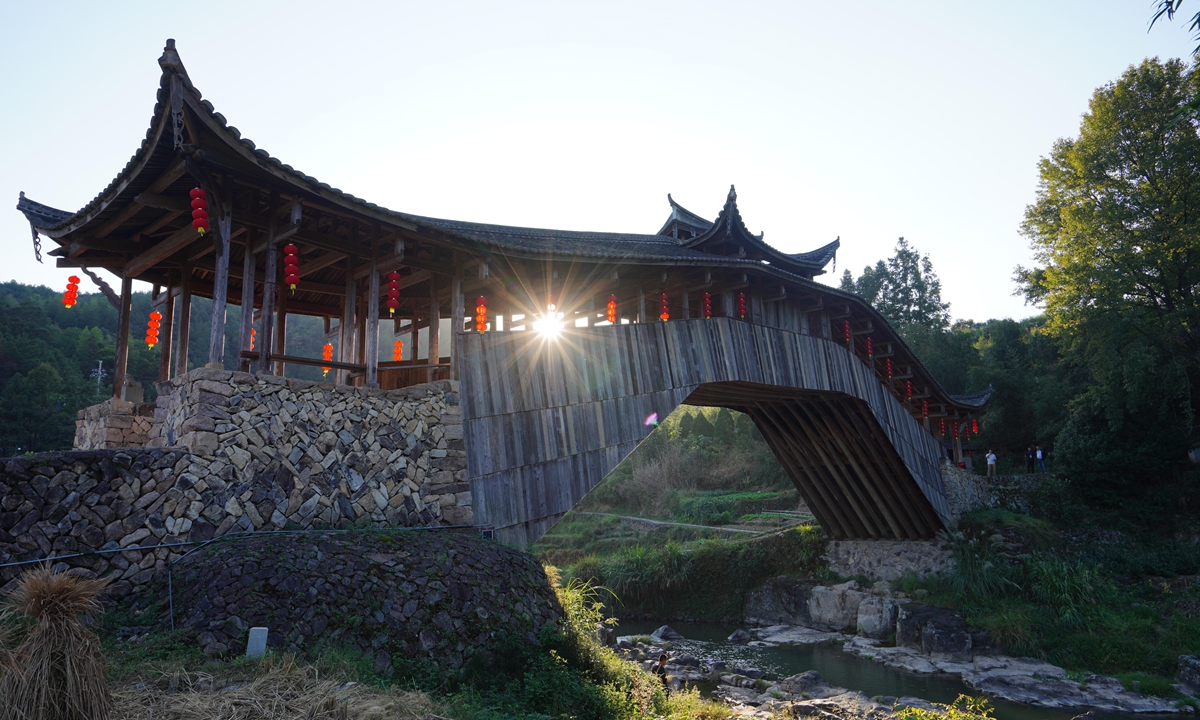
A corridor bridge in Taishun Photo: VCG
The inheritance of China's unique architectural heritage of lang qiao, or corridor bridge, which combines traditional Chinese culture and scenery, is being made possible through inter-provincial cooperation and the integration of technology.
Recently, a roundtable meeting for the protection of corridor bridges hosted by the National Cultural Heritage Administration was held in Taishun, East China's Zhejiang Province.
The aim of the meeting was to fully implement the relevant requirements of the Three-Year Action Plan for the Protection of Covered Bridges (2023-25) issued in May and explore the systematic strengthening of corridor bridge protection and utilization.
Among the ancient bridges in China, stone arch bridges and stone slabs are the most common, but there is another rare type, bridges covered with corridors or other buildings.
With a history of over 2,000 years, corridor bridges are a very distinctive sub-type of Chinese cultural relics. When constructed, they are integrated with the surrounding mountains, water and rural landscape and are a carrier of local social life and cultural traditions.
The protection of corridor bridges is an important fulcrum for inheriting history and promoting rural revitalization.
Among the national key cultural relics protection units, there are 138 different types of corridor bridges found in 13 provinces and autonomous regions across the country.
Taishun is home to many corridor bridges. There are 32 ancient corridor bridges in the region, of which 15 are national key cultural relics protection units.
For example, Beijian Bridge, located in Sixi Town, Taishun, is considered by many as the most beautiful corridor bridge.
The upcoming action plan will complete a special survey of corridor bridges, improve the cultural relics protection system for this particular kind of bridge, improve the surrounding environment of corridor bridges and, most importantly, improve the level of risk prevention and control and emergency response.
"We not only pay attention to the use of corridor bridges, but also display and interpret the connotations they possess, which means paying attention to their social background and the cultural traditions associated with them," said Guan Qiang, deputy director of the National Cultural Heritage Administration, during the meeting.
At the roundtable meeting, representatives and experts on corridor bridge protection from Fujian, Guangdong, Zhejiang and other provinces shared their views.
The plan was jointly issued in late May by the Publicity Department of the Communist Party of China Central Committee, the Ministry of Culture and Tourism, and the National Cultural Heritage Administration.
The tasks set to be completed within three years include conducting a special survey of corridor bridge cultural relics, establishing a risk assessment mechanism, implementing corridor bridge protection projects, and cultivating a specialized talent team to better inherit this traditional culture.




